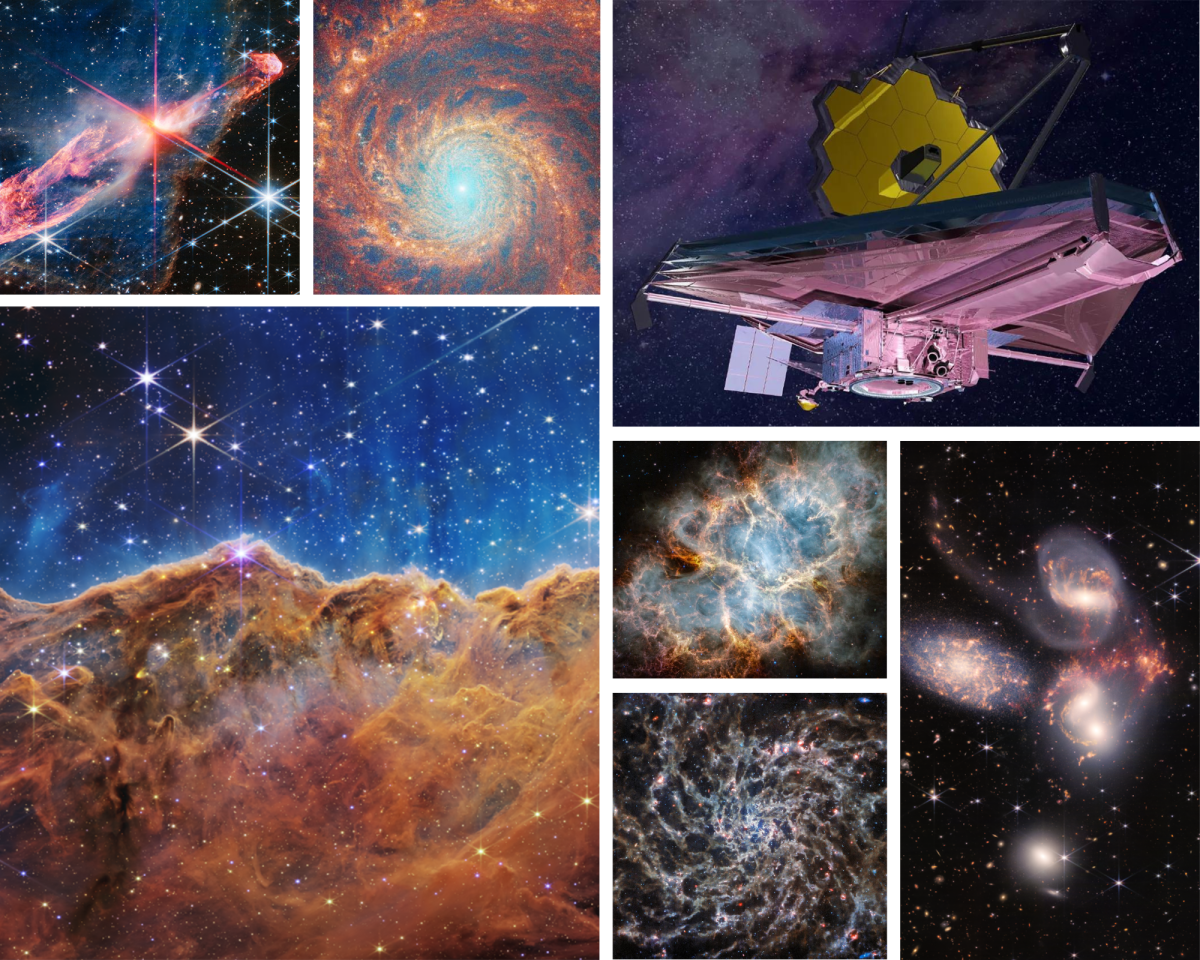The James Webb Telescope is one of the newest and most fascinating innovations, suggesting alternate explanations for our previous understanding and interpretations of the makeup of our universe. I interviewed several students here at Warren and a significant few knew little to nothing about the telescope, other than it taking pictures of space. Not only has the James Webb Telescope captured thousands of photographs, but it has proven its sophistication by capturing high-resolution images through the use of infrared wavelengths and high-sensitivity instruments. Launched on Christmas Day in 2021, the JWST has already taken photos of countless Deep-Sky Objects. Some of the highlights include the Carina Nebula, Neptune’s rings, the Pillars of Creation, black holes, exoplanets, and more!
Taking 30 years and $10 million to build, the telescope has embarked on a journey of orbiting the sun 1.5 million kilometers away from the Earth at the second Lagrange or L2. Unlike the Hubble telescope which orbits the Earth, the James Webb orbits at the second Lagrange, allowing it to stay in the direct line as Earth while it moves around the Sun and maintains communication. Additionally, the JWST covers longer wavelengths than the Hubble, helping it to look back in light years and discover the earlier galaxies formed at the beginning of the universe. For example, the James Webb’s Mid-Infrared Instrument (MIRI) has spotted 2 rare exoplanets that appear to be orbiting around dead stars, or “white dwarfs.” These planets share many resemblances with Jupiter and Saturn as they have similar temperatures, ages, masses, and orbital separations. The mysteries add on with the James Webb Telescope uncovering a 13 billion-year-old galaxy that most believed never existed. This galaxy is named ZF-UDS-7329 and has disproven all that once was deemed to be true. Scientists have been monitoring the galaxy, and by observing it from 11.5 billion years in our past, scientists have confirmed that the ZF-UDS-7329 is even larger than the Milky Way Galaxy. What confuses most scientists is that a galaxy of such immense size should never have formed that early in the universe. This demonstrates just how little we know about our universe and how much more we have yet to learn.
As of now, the James Webb Telescope is the most advanced model in use. With modern equipment, NASA has been able to retrieve potential ingredients for exoplanets. The JWST has observed the atmospheres and conditions of planets in “habitable zones.” The detection of formic acid, methane, formaldehyde, and sulfur dioxide in the atmosphere has revealed the possibility of exoplanets capable of supporting life. On Europa, one of Jupiter’s icy moons, carbon dioxide was found, which is an essential element that fuels life here on Earth. Outside our solar system, a “mini-Neptune” named Gliese 1214 b was discovered. Unlike the Milky Way Galaxy, mini-Neptunes are surprisingly missing from our solar system. The atmosphere of this mini-Neptune is hazy with an obvious cloud layer that seems to hint at being a “water world” from the far past. The discovery of Gliese 1214 b can allow for extensive research to uncover the reason behind why there’s so few in our solar system.
But even with all these groundbreaking discoveries, the search for habitable planets isn’t over just yet. NASA Scientists have eyes for the future with the next-generation Nancy Grace Roman Space Telescope expected to launch in 2027 and the Habitable World Observatory to launch in 2040. The goal? To find 25 planets similar to Earth that orbit Sun-like stars through direct imaging, which is especially important in identifying exoplanets. With the power of human wisdom and innovation, we may finally discover another planet containing the components to sustain life. Although there’s imminent danger in encountering an alien species, we must stay focused on our search for habitability in case we must leave Earth. As Stephen Hawking once said, “I don’t think the human race will survive the next thousand years, unless we spread into space. There are too many accidents that can befall life on a single planet. But I’m an optimist. We will reach out to the stars.”
Works Cited:



